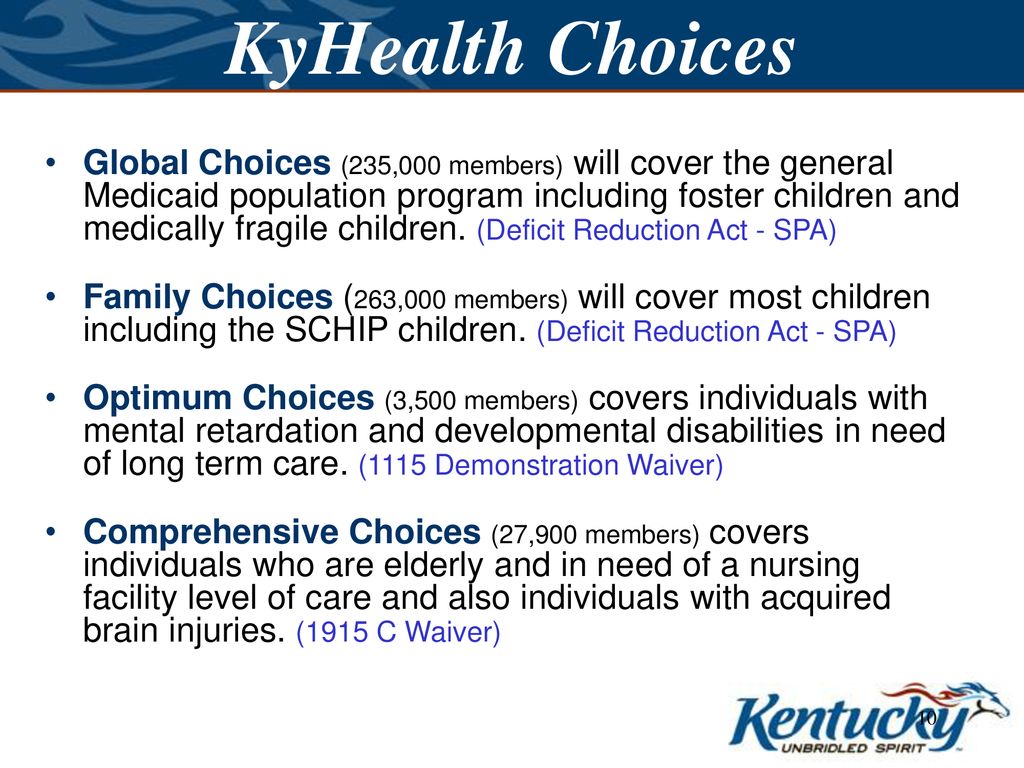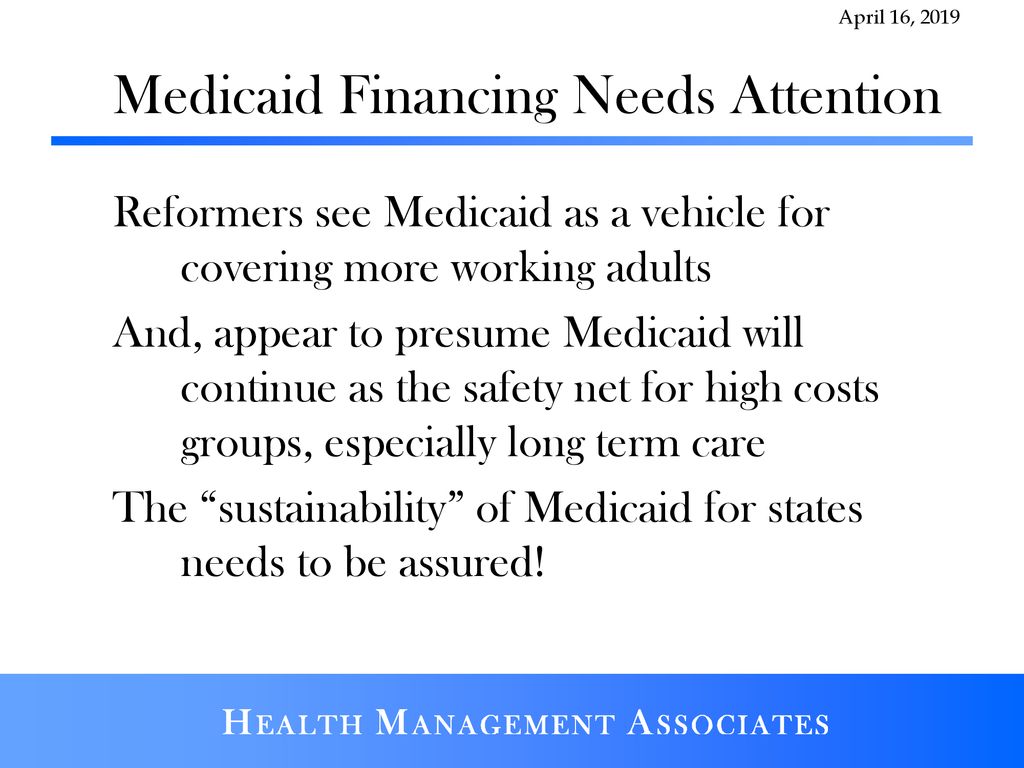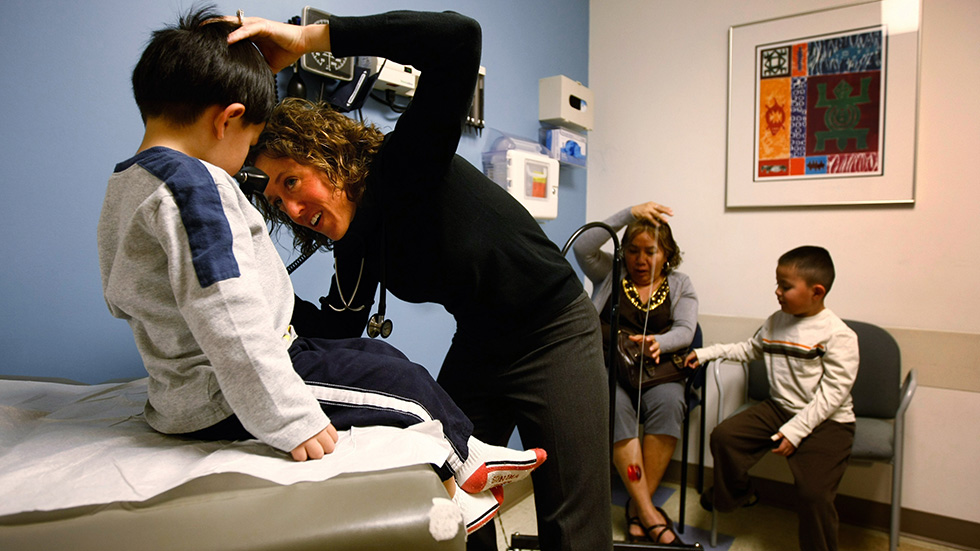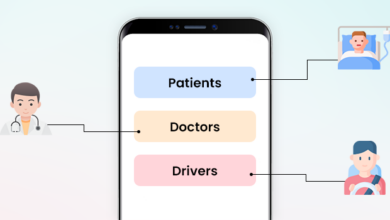
Medicaid Redeterminations CHIP Coverage Losses for Children
Medicaid redeterminations chip coverage losses children – Medicaid redeterminations, CHIP coverage losses for children – it’s a phrase that’s quietly impacting countless families. We’re talking about the real-life struggles faced by parents as they navigate the complex process of maintaining crucial healthcare coverage for their kids. This isn’t just about paperwork; it’s about the very real possibility of losing access to vital medical care, leaving families grappling with anxiety and uncertainty.
This post delves into the intricacies of this issue, exploring the vulnerabilities of affected children and families, the varied state-level responses, and potential solutions to mitigate the crisis.
The process of Medicaid redetermination involves regularly reviewing eligibility for government-funded healthcare programs. For children, this often means checking if they still meet the income and other requirements for Medicaid or the Children’s Health Insurance Program (CHIP). When families lose coverage due to these redeterminations, the consequences can be devastating, ranging from delayed or forgone medical care to long-term health problems and financial hardship.
The impact is felt most acutely by vulnerable populations, including those from low-income families, minority groups, and those living in underserved areas. Understanding the intricacies of this system is crucial for advocating for better protection for children’s healthcare.
Impact of Medicaid Redeterminations on Children
Medicaid redeterminations, the process of reviewing eligibility for Medicaid and the Children’s Health Insurance Program (CHIP), are currently impacting millions of families across the United States. This process, often complex and bureaucratic, can lead to significant disruptions in healthcare access for children, with potentially devastating consequences for their health and well-being. The unwinding of enhanced Medicaid eligibility, implemented during the COVID-19 pandemic, has further exacerbated this issue, leaving many families scrambling to maintain coverage for their children.
Medicaid Redetermination Process and Effects on Children’s Healthcare Access
The Medicaid redetermination process involves a review of a family’s income, household size, and other eligibility criteria. Families are required to submit updated information, often through complex online portals or paper applications. Failure to complete the process correctly or on time can result in the loss of coverage. For children, this means losing access to regular check-ups, vaccinations, treatment for chronic conditions, and emergency care.
The administrative burden placed on families, particularly those already struggling with poverty or limited resources, often makes successful navigation of this process extremely challenging. Many families may lack the time, internet access, or understanding of the required paperwork to complete the process correctly, resulting in unintended coverage loss.
Unwinding of Enhanced Medicaid Eligibility and its Impact on CHIP Coverage
The enhanced Medicaid eligibility provisions implemented during the COVID-19 public health emergency (PHE) temporarily expanded coverage to millions of individuals, including many children. The unwinding of these provisions has resulted in a significant increase in redeterminations, leading to a surge in children losing their Medicaid coverage. Since CHIP coverage is often dependent on Medicaid eligibility, children who lose their Medicaid coverage may also lose their CHIP coverage, leaving them without any public health insurance.
This leaves a significant number of children vulnerable and at risk for significant health issues.
Consequences of Losing Medicaid or CHIP Coverage for Children’s Health and Well-being
Losing Medicaid or CHIP coverage can have severe consequences for children’s health and well-being. Without access to regular healthcare, children may delay or forgo necessary medical care, leading to preventable illnesses and complications. Chronic conditions may go unmanaged, resulting in worsening health outcomes. Preventive care, such as vaccinations and dental checkups, may be missed, increasing the risk of infectious diseases and dental problems.
The financial burden of unexpected medical bills can further strain families already struggling to make ends meet.
Examples of Health Issues Exacerbated by Loss of Coverage
Loss of health insurance can exacerbate many health issues in children. For example, a child with asthma may go without their inhaler or regular check-ups, leading to increased asthma attacks and hospitalizations. A child with diabetes may not have access to insulin or regular blood sugar monitoring, resulting in serious complications. A child with a dental problem may delay or forgo treatment, leading to infections and more extensive, and costly, dental work later.
These are just a few examples of how the loss of coverage can have cascading negative effects on a child’s health.
Healthcare Access of Children Before and After Medicaid Redetermination
| Pre-Redetermination | Post-Redetermination | Health Outcome | Impact on Family |
|---|---|---|---|
| Regular check-ups, vaccinations | Delayed or missed check-ups, missed vaccinations | Increased risk of preventable illnesses | Increased stress, potential for medical debt |
| Access to specialist care (e.g., orthodontist) | Delayed or denied specialist care | Worsening of existing conditions | Financial burden, potential for long-term health problems |
| Medication coverage for chronic conditions | Lack of medication coverage | Uncontrolled chronic conditions, hospitalizations | Significant financial hardship, emotional distress |
| Emergency care | Delayed or forgone emergency care due to cost | Serious health complications or death | Financial ruin, potential for legal issues |
Vulnerable Populations Affected by Coverage Losses

Source: slideplayer.com
The unwinding of the continuous coverage requirement for Medicaid and CHIP has disproportionately impacted vulnerable children and families, leading to significant healthcare access disparities. Understanding which groups are most at risk and the challenges they face is crucial for developing effective interventions and support systems. This section examines the specific populations most affected by coverage losses during redeterminations, highlighting the systemic inequities that exacerbate these challenges.
Children in Low-Income Families
Children from low-income families are inherently more vulnerable to losing Medicaid or CHIP coverage during redeterminations. These families often face multiple barriers, including unstable housing, food insecurity, and limited access to transportation and technology, making it difficult to navigate the complex redetermination process. Even small increases in income can push families above the eligibility threshold, leaving them with no affordable healthcare options.
For example, a family experiencing a temporary increase in income due to a seasonal job might lose coverage even if their overall financial situation remains precarious. This highlights the precariousness of their healthcare access.
Children of Color and Immigrant Families
Children of color and immigrant families face additional hurdles in maintaining their health coverage. Language barriers, cultural differences, and mistrust of government systems can significantly impede their ability to successfully complete the redetermination process. These families may also lack access to reliable information and support networks, leaving them more likely to experience coverage gaps. Discriminatory practices and systemic biases within the healthcare system further exacerbate these challenges.
Studies have consistently shown higher rates of uninsured children within these communities compared to their white counterparts.
Children in Rural Areas
Geographic location plays a significant role in access to healthcare and the ability to navigate the redetermination process. Children in rural areas often face limited access to transportation, healthcare providers, and internet connectivity, making it harder for families to complete the necessary paperwork and attend appointments. The distance to healthcare facilities, combined with potential lack of transportation options, significantly increases the barriers to maintaining coverage.
Furthermore, the limited availability of healthcare providers in rural areas means that even if children retain coverage, accessing timely and appropriate care remains a challenge.
Challenges Faced by Families Navigating the Redetermination Process
Families struggling to maintain Medicaid or CHIP coverage during redeterminations often encounter a complex and burdensome process. This includes navigating confusing paperwork, meeting strict deadlines, and providing extensive documentation. The process can be particularly daunting for families who are already dealing with stress, poverty, and other social determinants of health. Many families lack the resources or support to effectively navigate this process, leading to unintended coverage losses.
These challenges are further compounded by a lack of clear and accessible information, as well as insufficient support from caseworkers or other professionals.
Strategies for Improving Outreach and Support for Vulnerable Families
Effective outreach and support strategies are critical to mitigating the negative impact of Medicaid and CHIP redeterminations on vulnerable populations. These strategies should include proactive outreach to high-risk families, providing culturally and linguistically appropriate information, simplifying the application process, and offering technical assistance and support to families throughout the redetermination process. Investing in community-based organizations that can provide direct support to families is also crucial.
Additionally, streamlining the process and implementing user-friendly online portals can significantly improve access and reduce administrative burden.
Resources Available to Assist Families Facing Coverage Loss
It’s vital for families to know where to turn for help during this challenging time. Here are some resources that can assist families facing potential coverage loss:
- State Medicaid agencies: Each state has its own Medicaid agency that can provide information and assistance with the redetermination process.
- Healthcare providers: Doctors, nurses, and other healthcare professionals can often provide guidance and support to families navigating the system.
- Community health centers: These centers provide comprehensive healthcare services to low-income and uninsured individuals and families.
- Legal aid organizations: Legal aid organizations can provide assistance with navigating the complexities of the Medicaid and CHIP programs.
- Navigator programs: Some states have navigator programs that can help families understand and complete the redetermination process.
State-Level Responses to Medicaid Redeterminations
The unwinding of continuous Medicaid coverage, mandated during the COVID-19 public health emergency, has resulted in a patchwork of state-level responses to the massive undertaking of redetermining eligibility. States, facing varying levels of administrative capacity and political climates, have adopted diverse strategies, leading to significant disparities in the impact on children’s healthcare access. Understanding these differences is crucial for identifying effective approaches and advocating for policy improvements.
Variations in State-Level Policies Affecting Children’s Eligibility
State policies regarding Medicaid and CHIP eligibility for children during redeterminations vary considerably. Some states have proactively streamlined their processes, utilizing technology and expanding outreach efforts to minimize disruptions. Others have faced significant challenges, hampered by outdated systems and limited resources, resulting in higher rates of disenrollment. For example, states with robust online portals and automated systems have experienced smoother transitions, while those relying on primarily paper-based applications have seen significant backlogs and delays.
This difference in technological infrastructure directly impacts efficiency and the number of children successfully retaining coverage. Furthermore, variations exist in the level of outreach and assistance provided to families, with some states offering extensive support and others leaving families to navigate the complex process independently. The availability of navigators and dedicated staff to assist families directly correlates with successful retention rates.
State-Level Initiatives to Mitigate Coverage Losses
Many states have implemented initiatives to mitigate the impact of coverage losses on children. These include extending renewal deadlines, simplifying application processes, and enhancing outreach efforts to families at risk of losing coverage. Some states have employed innovative strategies such as automated renewal systems, text message reminders, and partnerships with community organizations to reach vulnerable families. Others have increased funding for outreach and enrollment assistance programs.
For instance, California invested heavily in a multi-pronged approach including digital outreach, community partnerships, and dedicated call centers, resulting in a relatively lower disenrollment rate compared to states with less comprehensive strategies. Conversely, states with limited resources and fewer initiatives have seen significantly higher rates of children losing coverage.
Impact of Differing State Policies on Child Coverage
The disparity in state-level approaches has resulted in a wide range of outcomes regarding children’s healthcare coverage. States with proactive and well-funded initiatives have experienced lower rates of disenrollment, while those with limited resources and less robust processes have seen significantly higher numbers of children losing coverage. Data from the Kaiser Family Foundation, for example, illustrates a clear correlation between the level of state-level investment in outreach and the retention rate of children in Medicaid and CHIP.
States that invested in proactive outreach and streamlined processes have seen significantly fewer children lose coverage compared to those that have not. This underscores the critical role of state-level policy in protecting children’s access to healthcare.
Hypothetical Policy Proposal for Minimizing Disruptions
A national policy prioritizing proactive, streamlined, and technology-driven redetermination processes could significantly reduce disruptions to children’s healthcare coverage. This would involve providing substantial federal funding to states to upgrade their IT infrastructure, implement automated renewal systems, and expand outreach efforts. The policy should mandate the use of multi-lingual resources and culturally competent outreach strategies to reach all eligible families.
Additionally, a standardized, simplified application process across all states would improve efficiency and reduce the burden on families. This national framework, coupled with robust data collection and monitoring, would allow for continuous improvement and ensure that all children maintain access to essential healthcare services throughout the redetermination process. Such a proactive national approach, modeled on the success of states with strong initiatives, could serve as a benchmark for future policy decisions and ensure the well-being of children nationwide.
Long-Term Consequences of CHIP Coverage Losses

Source: slideplayer.com
The news about Medicaid redeterminations and the resulting CHIP coverage losses for children is truly alarming. It makes me wonder about the broader implications for healthcare access, especially when you consider larger systems facing financial strain, like Steward Health Care, which recently secured financing to emerge from bankruptcy, as reported by this article. This instability in the healthcare landscape only exacerbates the challenges faced by families already struggling to afford their children’s healthcare needs amidst these Medicaid changes.
Losing access to healthcare, especially during childhood, casts a long shadow that extends far beyond the immediate period of coverage lapse. The consequences ripple through a child’s life, impacting their physical and mental well-being, educational attainment, and ultimately, their future economic prospects. The cumulative effect on both the individual and society is substantial and demands serious consideration.
Long-Term Health Consequences
The lack of consistent healthcare access during childhood can lead to a cascade of negative health outcomes. Untreated or delayed treatment of illnesses and injuries can result in chronic health problems, increased risk of hospitalizations, and even premature mortality. For example, a child who misses regular check-ups might develop undetected vision or hearing impairments, hindering their academic performance and social interactions.
Similarly, untreated asthma can lead to severe respiratory complications later in life. These untreated conditions often lead to higher healthcare costs in the long run, as managing chronic conditions is considerably more expensive than preventative care. A study published in the journal
The rising number of children losing CHIP coverage due to Medicaid redeterminations is truly alarming. This comes at a time when healthcare access is already a major concern, and the news that the federal trade commission sues block novant health community health systems hospital acquisition only adds to my worries. Less competition in the hospital market could further limit access to affordable care, exacerbating the problem of children losing their health insurance.
We need solutions, and fast.
Pediatrics* found a significant correlation between periods of uninsured status in childhood and increased hospitalizations and emergency room visits in adolescence.
Impact on Development and Educational Outcomes, Medicaid redeterminations chip coverage losses children
Delayed or forgone healthcare directly impacts a child’s development and educational outcomes. Children experiencing health problems, whether physical or mental, may struggle to keep up with their peers academically. Missed school days due to illness exacerbate this issue, creating a cycle of falling behind and disengagement. For instance, a child with untreated ADHD might experience significant learning difficulties and behavioral problems in school, leading to lower academic achievement and potentially increasing their risk of dropping out.
Furthermore, chronic health issues can affect concentration and cognitive function, impacting a child’s ability to learn and thrive in the classroom. This can significantly reduce their future educational and career opportunities.
Economic Burdens on Families
The financial burden of unmet healthcare needs can be devastating for families, particularly low-income families who rely on CHIP coverage. Medical debt can accumulate rapidly, leading to financial hardship, difficulty paying for essential needs like housing and food, and increased stress levels within the family. For example, a family facing a high medical bill for an untreated illness might have to make difficult choices, such as foregoing necessary dental care for their children to pay for immediate medical needs, further compromising the child’s long-term oral health.
This financial strain can also lead to instability and family disruption, creating further challenges for the child’s development and well-being.
Long-Term Societal Costs
The societal costs associated with children losing access to healthcare are substantial and far-reaching. Increased healthcare utilization in adulthood, reduced workforce participation due to health limitations, and increased reliance on social welfare programs all contribute to higher overall costs for society. The long-term economic impact of untreated childhood illnesses can be substantial, leading to reduced productivity and increased healthcare spending throughout the child’s life.
For example, the cost of treating chronic conditions resulting from untreated childhood illnesses can be significantly higher than the cost of preventative care during childhood. This represents a significant loss of potential economic contributions to society.
Visual Representation of Long-Term Impacts
Imagine a branching tree. The trunk represents a healthy, insured child with access to preventative care. Strong, healthy branches symbolize positive developmental milestones (academic success, social development, physical health). Now, imagine another tree, the trunk representing a child who experiences a lapse in CHIP coverage. Some branches are stunted or withered, representing missed developmental milestones due to untreated health issues.
These stunted branches lead to fewer opportunities (limited education, reduced career prospects, poorer health outcomes) in adulthood, forming a smaller, weaker canopy compared to the first tree. This visual illustrates the lasting and pervasive impact of CHIP coverage loss on a child’s life trajectory.
Potential Solutions and Policy Recommendations
The alarming rate of children losing Medicaid and CHIP coverage during redeterminations demands immediate and comprehensive action. Simply improving the process isn’t enough; we need proactive strategies that prevent coverage loss in the first place and ensure a seamless transition for families who do need to re-enroll. This requires a multi-pronged approach involving technological advancements, policy changes, and a commitment to proactive outreach.
Improving the Efficiency and Effectiveness of Medicaid Redetermination
Streamlining the redetermination process is crucial. This involves simplifying application forms, using clear and accessible language, and providing multiple avenues for submission (online, mail, in-person assistance). Furthermore, states should implement robust quality control measures to minimize errors and delays in processing applications. For example, automated systems can cross-reference data from other state agencies to verify information, reducing the need for manual checks and speeding up processing times.
Regular audits and feedback mechanisms can help identify bottlenecks and areas for improvement within the system. This proactive approach can reduce administrative burden on both families and state agencies, resulting in a more efficient and accurate process.
Policy Recommendations to Minimize Child Coverage Losses
Several policy changes can significantly reduce the number of children losing coverage. One key strategy is extending the renewal period for Medicaid and CHIP. Currently, many states have short renewal periods, increasing the likelihood of families missing deadlines or experiencing changes in circumstances that affect their eligibility. A longer renewal period would provide more flexibility and reduce the administrative burden on families.
Additionally, implementing automatic renewal for eligible children would eliminate the need for families to repeatedly reapply, reducing the risk of coverage lapses. States could also adopt policies that allow for continuous eligibility for children in families who experience temporary income fluctuations, acknowledging the economic realities faced by many families.
The Role of Technology in Streamlining Redetermination
Technology plays a vital role in improving the redetermination process and enhancing access to information. User-friendly online portals can allow families to easily track their application status, submit required documents, and communicate with caseworkers. Text message reminders can help families meet deadlines and stay informed about their coverage status. Furthermore, integrating state systems with other relevant databases, such as those for schools and social services, can automate eligibility verification and reduce manual data entry.
This integration can also help identify children at risk of losing coverage proactively, allowing for timely intervention. For example, if a school system reports a change in a child’s address, the Medicaid system can automatically flag the child’s case for review, preventing unnecessary delays or coverage disruptions.
Expanding Medicaid Eligibility to Prevent Future Coverage Losses
Expanding Medicaid eligibility to cover more low-income families is a proactive measure that can prevent future coverage losses. This would ensure that more children remain continuously enrolled in Medicaid, providing them with consistent access to necessary healthcare services. Studies have shown that expanding Medicaid coverage leads to improved health outcomes for children, including reduced rates of hospitalization and emergency room visits.
The upcoming Medicaid redeterminations are causing a lot of anxiety, especially concerning potential CHIP coverage losses for children. Finding ways to ensure continuous care is crucial, and I’m fascinated by how technology can help bridge these gaps. I recently read about the innovative work being done at the ai most exciting healthcare technology center connected medicine upmc , which could potentially revolutionize access to care.
Hopefully, such advancements can help mitigate the impact of these redeterminations on vulnerable children.
The long-term cost savings associated with improved health outcomes can offset the initial investment in expanding Medicaid coverage. This expansion could also help address health disparities among different population groups.
A Comprehensive Plan to Protect Children’s Healthcare Access
A comprehensive approach to protecting children’s healthcare access requires a coordinated effort among federal and state governments, healthcare providers, and community organizations. This plan should include: (1) Simplifying the application process and extending renewal periods; (2) Implementing automatic renewal for eligible children; (3) Leveraging technology to streamline the process and improve access to information; (4) Expanding Medicaid eligibility; (5) Increasing funding for outreach and enrollment assistance programs; and (6) Establishing robust quality control measures to minimize errors and delays.
By implementing these strategies, we can ensure that all children have access to the healthcare they need to thrive.
End of Discussion: Medicaid Redeterminations Chip Coverage Losses Children

Source: thehill.com
The issue of Medicaid redeterminations and subsequent CHIP coverage losses for children is a complex one, demanding immediate attention and comprehensive solutions. While the challenges are significant, the potential for positive change is equally vast. By understanding the vulnerabilities of affected families, promoting effective outreach programs, and advocating for policy changes at both the state and federal levels, we can work towards a future where all children have access to the healthcare they need to thrive.
This requires a multi-faceted approach, encompassing improved communication, streamlined processes, and increased financial support. Let’s continue the conversation and push for solutions that protect the health and well-being of our nation’s children.
FAQ Guide
What happens if my child loses CHIP coverage?
Losing CHIP coverage can mean significant delays or denials of necessary medical care, potentially leading to worsening health conditions and increased financial burdens on the family.
How can I appeal a Medicaid redetermination decision?
Each state has a specific appeals process. Contact your state’s Medicaid agency for information on how to appeal a decision and the timeframe for doing so.
Are there resources available to help families facing coverage loss?
Yes, many organizations offer assistance. Contact your local health department, social services agency, or search online for resources specific to your state.
What is the difference between Medicaid and CHIP?
Medicaid is a joint federal and state program providing healthcare to low-income individuals and families, while CHIP is a program specifically designed to provide healthcare coverage to children in families who earn too much to qualify for Medicaid but cannot afford private insurance.





